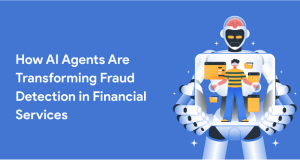
tractor
Edge computing has taken flight in recent years. The field is slowly but steadily entering its maturity stage as a technology. As we are heading into the era of billions generating and transmitting data every second, the Internet of Things (IoT), and traditional cloud computing models are breaking down. Edge computing solves the problem by moving processing power closer to where it needs to be at or near the data source. Minimizing latency and waste while simultaneously empowering an entirely new level of technology. This post explores these changes and their impact on IoT as well, looking at some key trends such as the agricultural sector beginning to become smarter even with its traditional machinery like tractors.
What is Edge Computing?
Edge computing is a distributed model that processes data closer to where it was created (i.e., right on the “edge” of your network) rather than relying solely on using a giant powerhouse, miles and miles away in various centralized or regional data-processing warehouses. This is in contrast to traditional cloud computing, where data are sent to a centralized server that does the processing and storage. While other data is sent back to the cloud, only necessary metrics are maintained in edge computing toJSON.toJSONString.
This distributes the processing of data which reduces the amount of information that needs to be sent over long distances. Hence reducing latency and bandwidth. Consequently, edge computing delivers in-region processing. Plays an important role where quick responses are needed such as in autonomous vehicles, industrial automation smart cities, etc.
The Role of Edge Computing in the IoT
The Internet of Things (IoT) => is simply a network of physical devices that connect with the cloud, and exchange data and other information from each point on IoT. IoT devices are everywhere: from smart home appliances and fitness wearables to industrial machines or even tractors in the fields of agriculture.
The Journal alone predicts that IoT will create 4. ZB of data, asserting one of the overarching cautions to leveraging cloud computing for much edge and gateway decision making. Millions of devices that will constantly report their data to the cloud lead straight toward network congestion. Latency delays as well increased operational costs. Edge computing comes to the rescue in such scenarios as it makes provisioning for data processing at or near where the data is physically generated. Instead of taking all that bulky raw information between centralized cloud servers.
Edge computing speeds up decision-making and enables faster processing of data by allowing devices to process it locally. One example of this is edge-enabled thermostats which can where data from nearby sensors allows them to change the target temperature in real-time instead of waiting for instructions over a typically less reliable link to geographically remote cloud servers. Similarly, in an industrial environment. Edge computing can allow predictive maintenance practices where data from machinery is analyzed on the fly to predict possible failures before expensive downtime occurs.
Lower Latency and Higher Performance
The most important benefit of edge computing is that it helps reduce latency. Latency: Latency is the time between data being produced and data processing to make a decision on it. For example, in applications such as autonomous vehicles or remote surgery where real-time processing is important and a delay of milliseconds can influence decisions.
Processing data at the source allows edge computing to reduce latency and act as an immediate response mechanism. This ability becomes more critical when time is of the essence. Cars need to be able to process the feeds from their sensors. Cameras in real-time, so as to actuate decisions letting your robocar wait for a call back from a distant cloud server is likely too slow when you’re closing on that red-light-ahead closure rate.
In industrial use cases, minimal latency can increase the efficiency of operations and better safety results. Its capability of monitoring real-time data can be very useful in a factory setting. With edge computing IoT could prevent accidents and ensure machinery performance runs at optimum.
Edge Computing and its Effect on Agriculture
Agribusiness has seen that edge computing is getting more and more popular. Which belongs to another of the many aspects including the smart farming revolution. IoT, sensors, and data analytics are used in smart farming to optimize agricultural practices covering everything from planting and irrigation through harvesting storage. Edge computing is central to this change, as it underpins real-time data processing and decision-making at the farm.
Tractors which were once thought to be nothing more than simple vehicles used for plowing. Tilling are now transforming into complex machinery laden with IoT sensors along with edge computing powers. Today, tractors have the ability to monitor soil quality. Crop health status, and even weather patterns so that data processing can happen in real-time onsite for optimal farming practices. One example is a tractor with edge processing capabilities that can measure the moisture in the soil. Adjust irrigation systems instantaneously to ensure that crops receive perfect water levels at minimal utility cost.
Edge computing also has enormous potential to improve the performance of precision agriculture (a farming management concept that uses technology to monitor. Manage crops at an extraordinarily detailed level). This information also provides farmers with an ability to act at key intervals throughout the season. Make decisions about their crop health or pest infestations. Nutrient levels allowing them targeted interventions that drive increased yield but reduce waste.
Challenges and Looking Forward
Despite the many advantages of edge computing, it does come with disadvantages. The handling of a distributed network concerning edge devices is probably the most challenging task. Making sure that devices are both secure and trusted. Can work together in concert is dependent on having a solid infrastructure to back up these management functions. The increasing number of edge devices also translates to a demand for efficient ways the manage and store data.
The future of edge computing is, therefore. A bit cloudy but there seems to be light at the end of the tunnel. Further advances in AI and machine learning (ML) are anticipated to take edge devices’ capabilities beyond what is currently possible with even more powerful data processing at the edge as well as decision-making functionality. In addition, as 5G networks roll out more widely speed. Bandwidth will increase which means latency will be further reduced making edge computing even more appealing for IoT applications.
Conclusion
The arrival of edge computing is seen as a major advancement in the way data are processed and handled in this digital era. Edge computing is a method to improve latency and efficiency by moving computation closer to the data source. Edge means on top at that point you are operating where you have more flexibility so in any kind of industry like agriculture real-time decision-making plays an important role.
With countless applications and exciting possibilities. Edge computing is set to at the forefront of leveraging the amazing capabilities of IoT devices as we enter a new era in which billions will be connected. Edge Computing Makes Even A Tractor High-Tech Thus, agriculture shows us how edge computing is shaping virtually every field.






